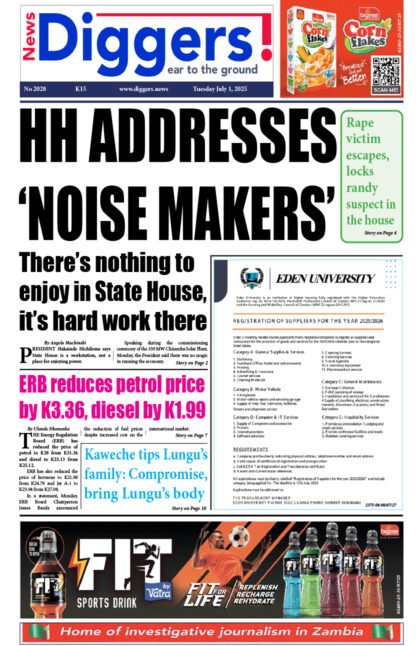Zambia Railways Limited is likely to remain loss-making because the parastatal has employed staff who are not competent enough to make it profitable, says transport expert Henry Chipewo.
And Chipewo has lamented how Zambia Railways utilised the US$120 million proceeds from the first US $750 million Eurobond issued in 2012 that has been squandered in view of no tangible results for stakeholders to see.
Commenting on Zambia Railways’ sustained financial losses as contained in the latest Auditor General’s Report, Chipewo noted that the struggling parastatal was likely to continue incurring losses due to the recurring appointment of incompetent staff who do not know how to run a railway company.
According to the Report of the Auditor General on the Accounts of Parastatal Bodies and other statutory institutions for the financial year ended December 31, 2017, Zambia Railways has incurred three successive losses in the period under review, with the highest being over K134 million in its 2016 financial year ending December 31.
Data from the AG’s report reveals that the firm’s losses after tax leaped from incurring a mere K1,418,000 in 2015 to K134,770,000 the following financial year, mainly driven by the company’s escalating administrative expenses and manpower costs.
“First of all, the board chairman (Lubinda Linyama) is a lawyer, what does he know about railways? Railways are very complex organisations; there are so many professions in railway systems; engineers who build the railway line and so forth. It’s so multi-faceted. This is the problem where you appoint people who have no technical know-how and these are the results,” Chipewo, a former Tazara managing director, said in an interview.
“There are no people there to run Zambia Railways! Right from the board to management; there are no people to run the railways in this country. We are dealing with people that have no capacity and no capability, that’s all.”
And he lamented how Zambia Railways management squandered the US $120 million proceeds from the first US $750 million Eurobond issued in 2012 in view of no tangible results for stakeholders to see.
“Because there was no strategy, it was misapplied! The first MD (Professor Muyenga Atanga); he lived in Lusaka and commuted to Kabwe instead of going to live in Kabwe where the headquarters of Zambia Railways was. Then, they bought various vehicles! Forgetting the investment that should’ve gone into Zambia Railways; the track is not functional. Those people are not railway experts so when there’s so much money, it was for luxury,” observed Chipewo, who further advised government to look for qualified personnel who understood the railway industry to improve the company’s finances.
“Railways are competing with road transport; they are competing with air transport. You ask yourself: ‘why should we be using trucks?’ A truck is capable of taking maximum loads per metric tonne; but a wagon for Zambia Railways can take 45 metric tonnes, one wagon. You need 100 truck and trailers to carry what one Zambia Railways train can carry. So, that money (Eurobond proceeds) should’ve been applied in rehabilitating the track so that it (trains) can attract traffic from the road to the railway.”




















One Response
Mr. Chipewo is right. Even just to get a quotation from Zambia Railways for transportation of goods from one point to another takes like forever